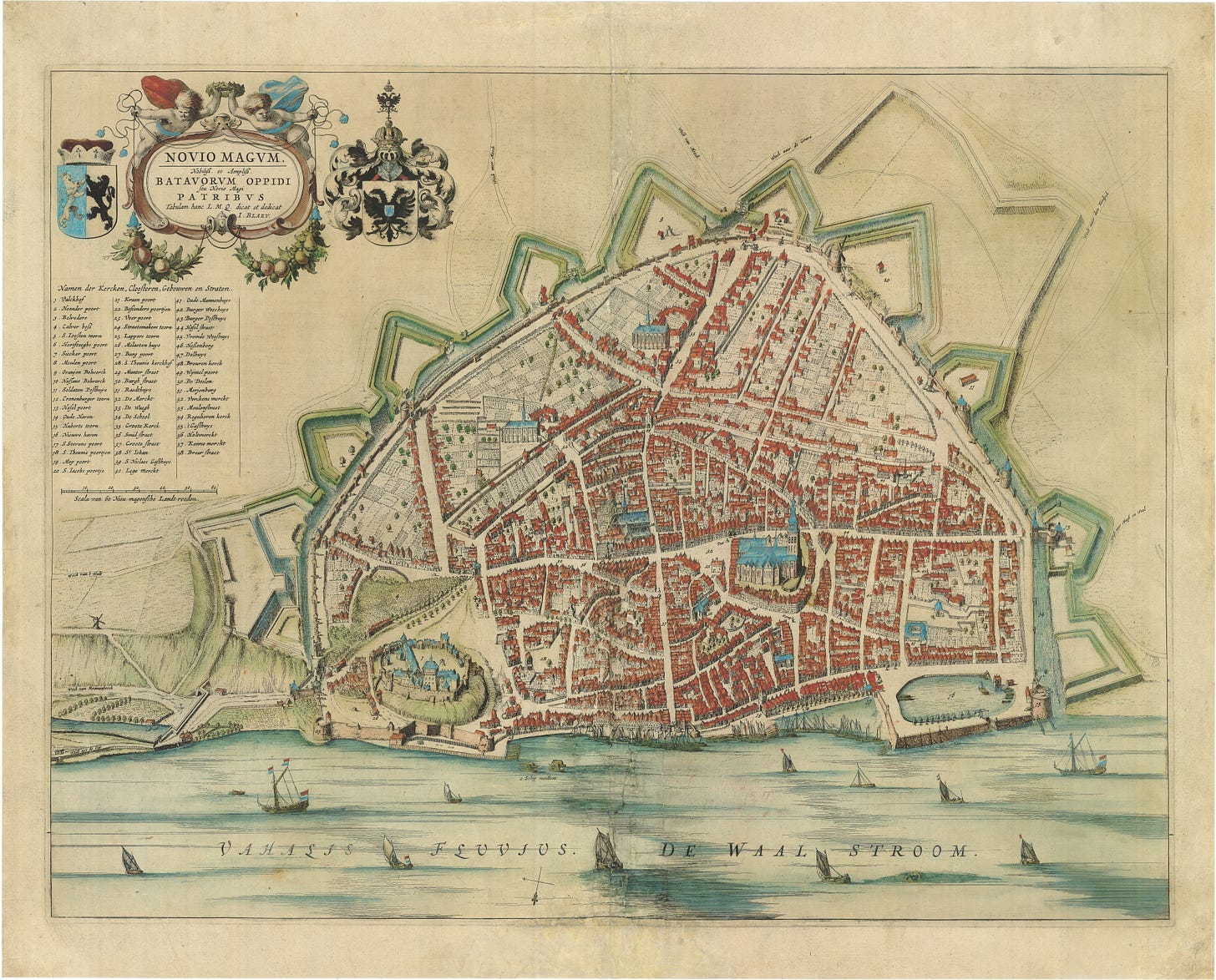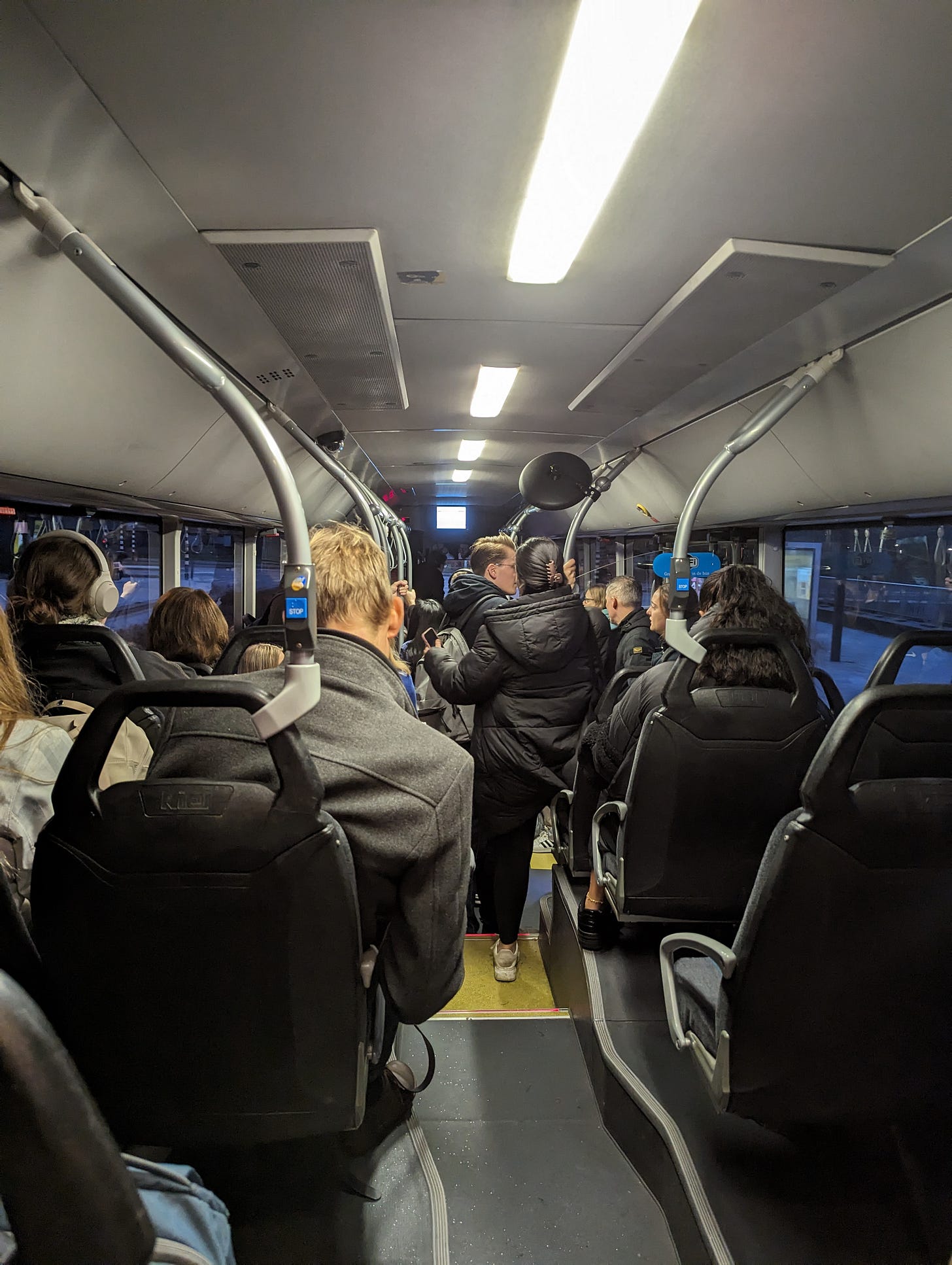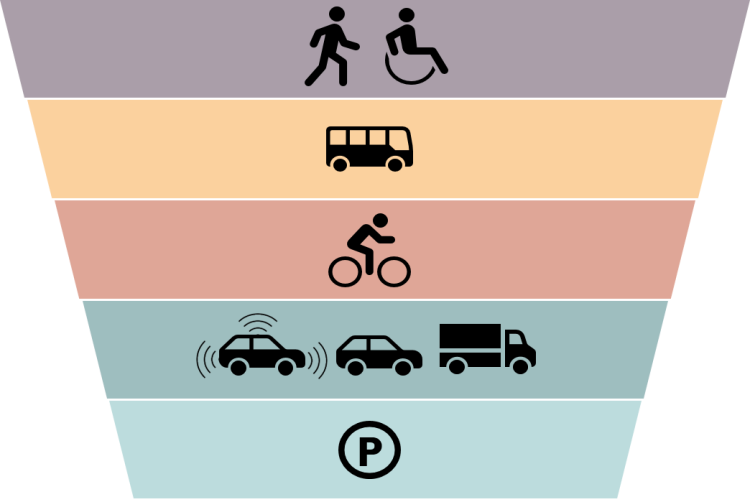What Madison can learn from Nijmegen
University towns outside of a big metro couldn't feel more different
I had the pleasure of visiting the city of Nijmegen in the southeast Netherlands for a week in November 2023. As someone who was motivated by Not Just Bikes to start thinking about urban spaces and how people interact with cities, the Netherlands is the mecca for people looking for cultures that aren’t dominated by cars. It was a great trip that met several criteria: visiting the Netherlands was on my bucket list, the majority of my visit was in a city other than Amsterdam or Utrecht (although I was able to visit both), and it was a work trip so I got to experience more normal life than touristy scenarios.
What makes up Nijmegen?
First, let me say that I did not “pick” this city. I didn’t know much about it, I still don’t know much about the history and what I’m describing is just my lived experience for a single week. That being said, I loved being there.
Nijmegen borders the Waal River in southeast of the Netherlands near Germany. It has a population just under 200,000 and is part of the Arnhem–Nijmegen metropolitan area that has over 700,000 in population. Radboud University anchors the city with the largest employment opportunities being at the university, in one of several local hospitals (including the research hospital at Radboud), and the semiconductor industry. The city is left wing, currently run by the GroenLinks (Green Party), and has been nicknamed Havana on the Waal because of it’s preferred political parties.
I know we have sister cities in Madison but this one sounds like an identical twin on paper.
However, the last row significantly contributes to the different feels in the cities; Nijmegen was built during the Roman Empire, was surrounded by walls, and has the “built before the automobile” advantage that many European cities have. American cities point to this and say “we can’t go back in time, we have to live with what we have now” and I agree. Every city modernizes, and although Nijmegen has the advantage of not building around the car, it still adapts to new technologies. I think it has done well in adapating such that people flying across the world to reside their for a week feel comfortable stepping off the train platform.
Speaking of, the main station (Station Nijmegen) is less than a 15 minute walk to the center of its core downtown. The downtown is car-limited (there are parking lots on the outskirts) and encourages people to walk and bike after arriving to the area in their personal vehicle or public transit. The station itself includes immense bike parking and is a local bus hub. When I took the bus to Radboud, I had several options and would have to wait no more than 4 minutes before I found a route that would get me there.
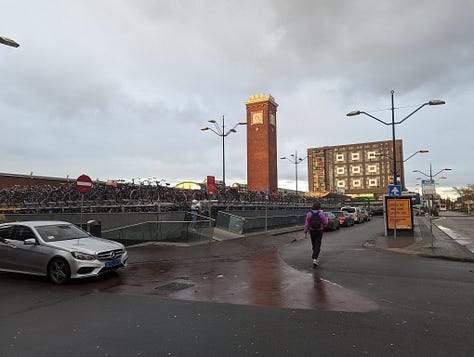
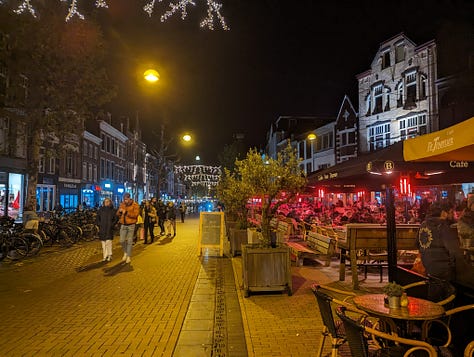
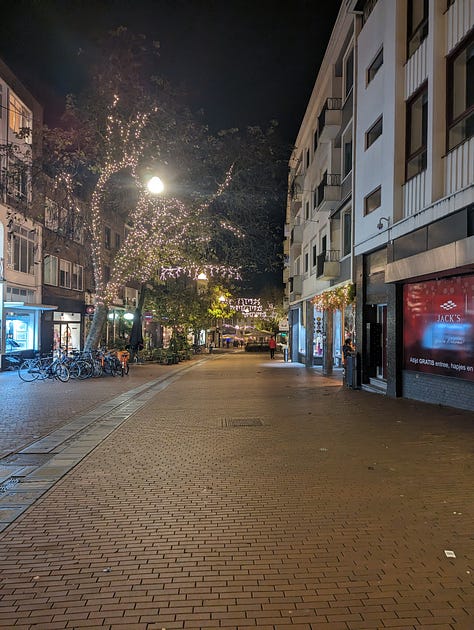
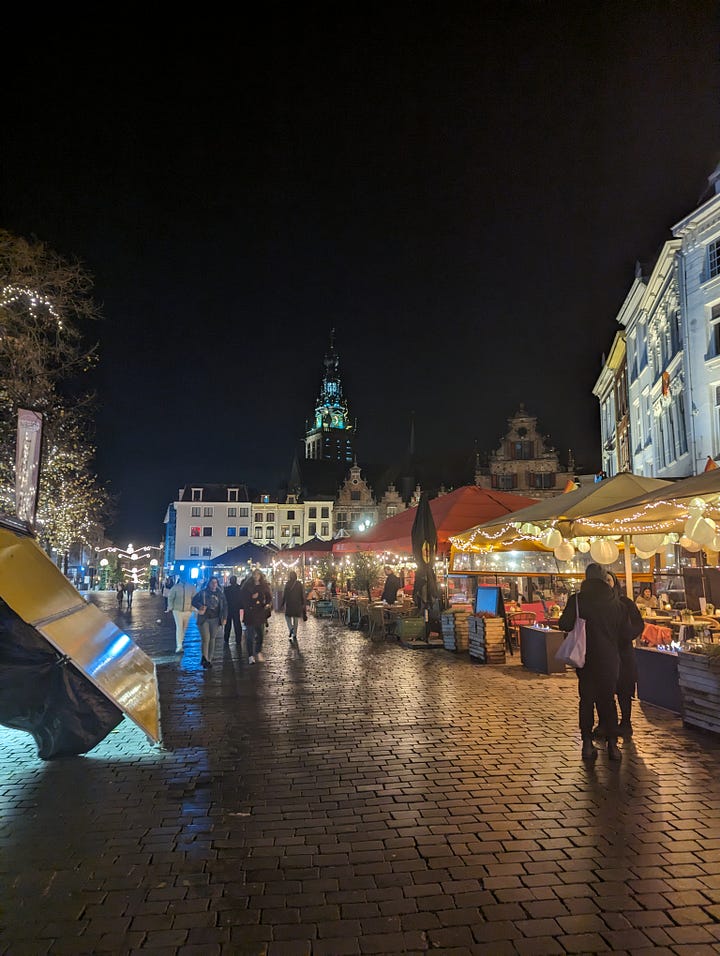
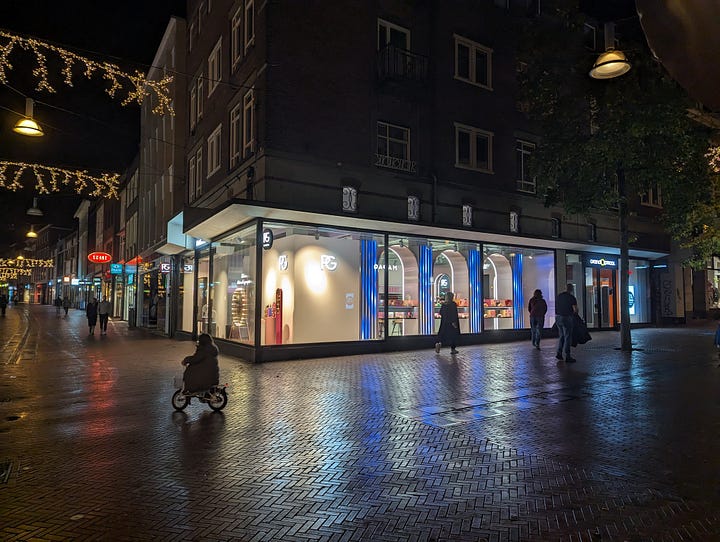
The city center is so pleasant to walk through because there is rarely car traffic. This was the first difference I noticed between Nijmegen and Madison: there’s not a single “State Street” but several that all lead to the center. Bikers and walkers are able to go through and there are automated pylons that prevent typical car traffic from entering (emergency and permitted vehicles can get through). The plazas are wide, well lit, quiet (no cars), and full of things to do like shopping, dining, and entertainment.
The level of infrastructure that caters to people is immense: the aforementioned pylons and wide walking areas, at-grade crossings for pedestrians and bikers, bus networks with helpful stations, and even little icons to indicate where people can throw away trash. These all contribute to a place that wants people to be there on their feet and makes it easy for them to do it.
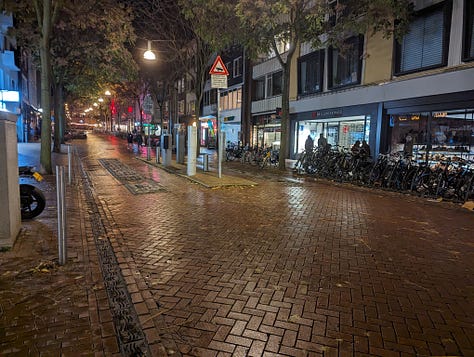
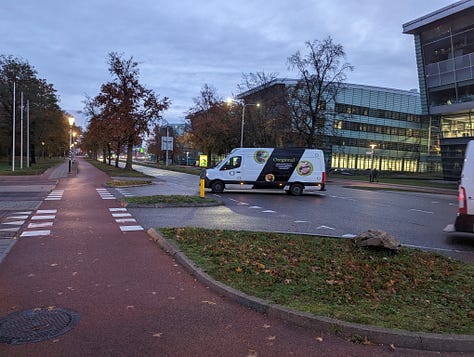
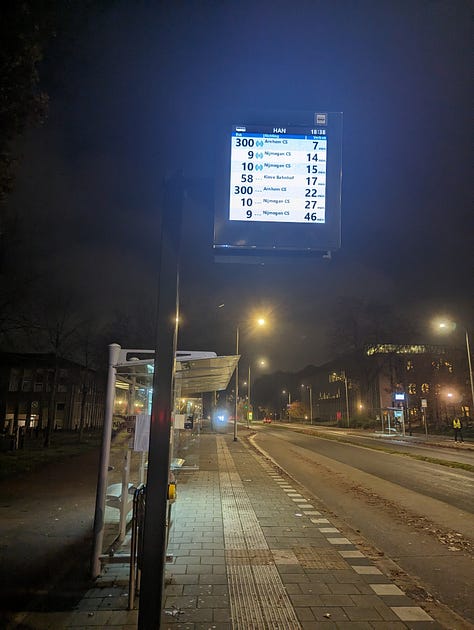
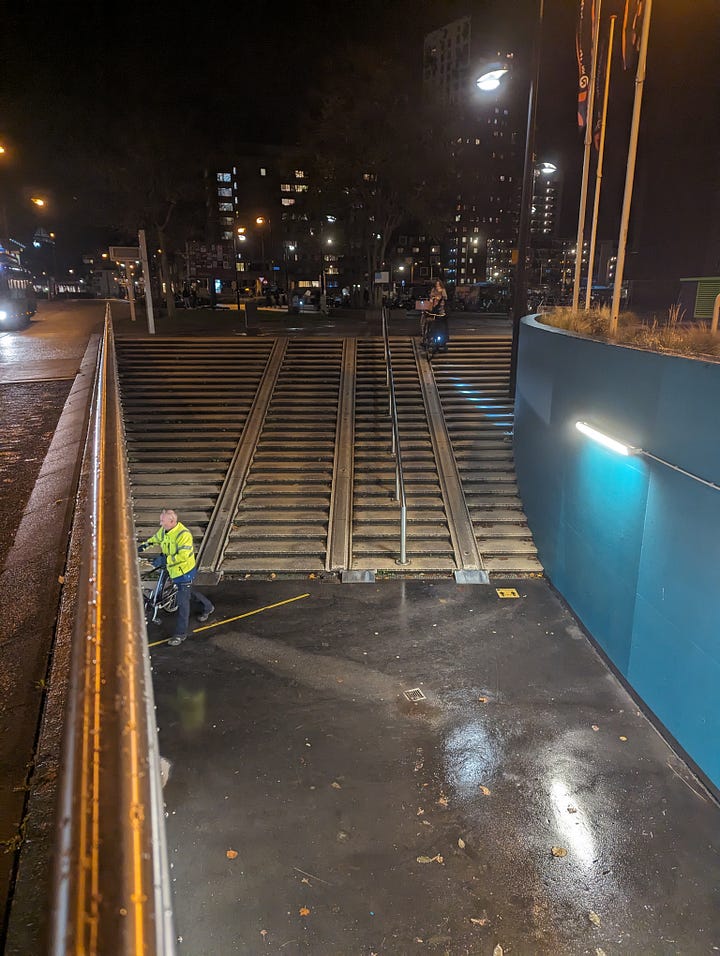
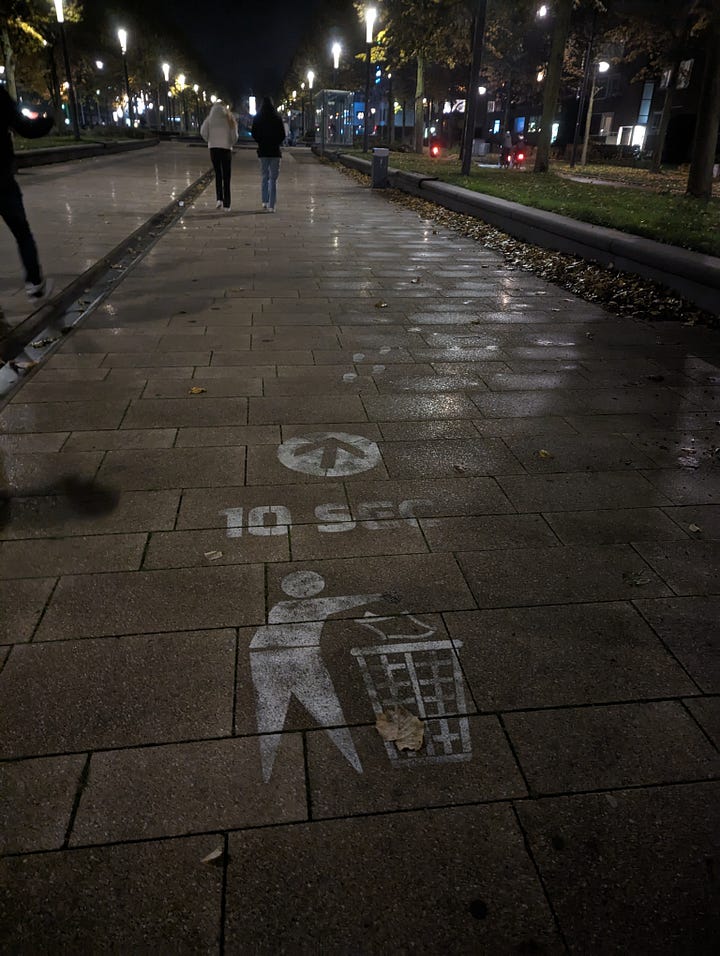
When I would commute to Radboud in the mornings I saw so many bikers I lost count. My bus was at 75% capacity or higher. There are certainly car drivers, but it’s treated as a luxury rather than a right and the driver’s pay for that luxury (parking is not central and you pay for it, streets are streets (narrow, slow) and roads are roads (highways that are away from pedestrian/bike traffic, not cutting through the city), and there’s not a gas station in sight).
The Netherlands is a prolific biking country; approximately 27% of trips are done via bike and there are over 18 million registered bikes making it more than 1 per capita in the country. I couldn’t find exact commute mode share for the province (Gelderland), but I did find some helpful “average trips per day by type” data showing that the average person in this region takes about .8 bike trips per day:
You might ask why this impressive. Gelderland is closer to the idea of a state (although still considerably smaller in physical size than most U.S states). It contains 2 million people and lower population density than other provinces in the Netherlands. Imagine if the state of Wisconsin saw the average person biking to work, a shop, or a different errand five days out of the week. This doesn’t include leisure. Car trips (and car mileage) still dominate but not in the way that it dominates vehicle miles traveled here in the United States. And Gelderland includes lots of rural areas, I’m sure this looks a lot more transit/biker friendly for the average Nijmegen citizen.
The foundation of Nijmegen was built without cars and that certainly helps with it’s non-car transportation options. But it has still adapted other practices which help its citizens find it more convenenient to walk or bike. This is not Amsterdam or Utrecht; it’s a similarly sized city to Madison. This isn’t something you can transition to in a day, but noticing and trying to improve the little aspects of pedestrian, bike, and transit options makes a huge difference in the long run. My biggest pet peeve is the Southwest Commuter Path crossings in the Regent area. Cars should be going slow anyway, we could add speed bumps to ensure they are going slow and letting bikers and pedstrians through. If you have similar comments or feedback, the Greater Madison MPO Active Transportation Plan Comment Map is an awesome tool. Madison should look to build on these smaller opportunities, iterating and building on past successes so the foundation grows stronger.
What about the other, larger Netherlands cities?
On my last day as I headed back to Amsterdam, I stopped in the capital city of biking around the world, Utrecht. Utrecht sees nearly 50% of its population using bike as the preferred mode of transit. One tunnel in the city sees nearly the same level of daily riders as Madison Metro (over 40,000 cyclists) and there’s a bike shed that can park 12,500 bikes. They take biking seriously here and I got to experience what’s it’s all about.
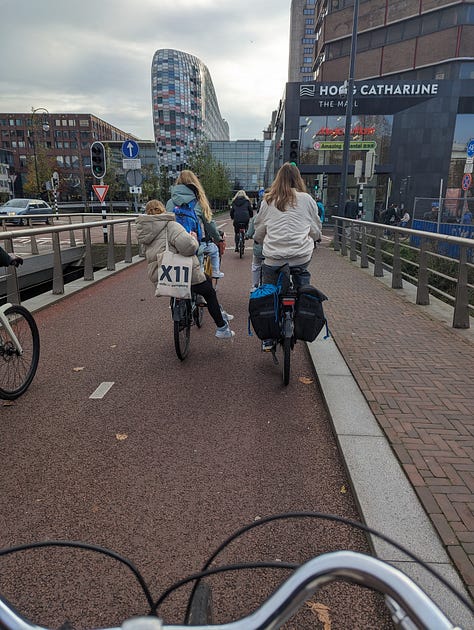
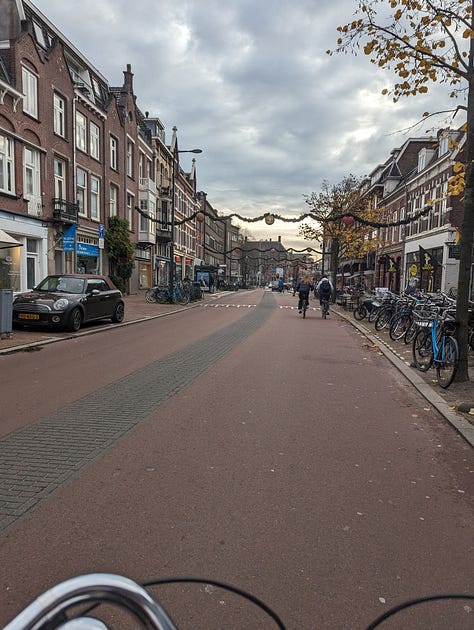
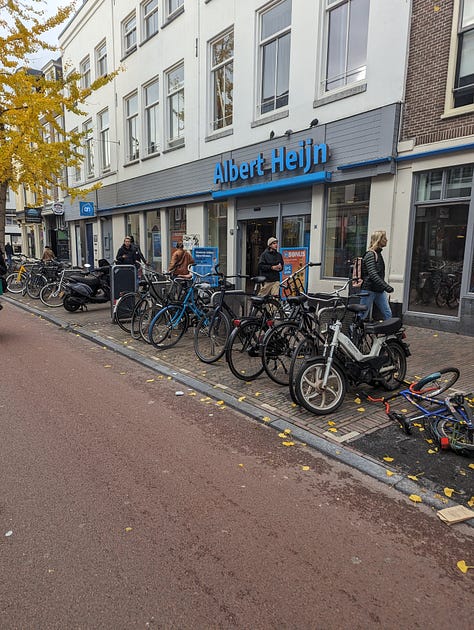
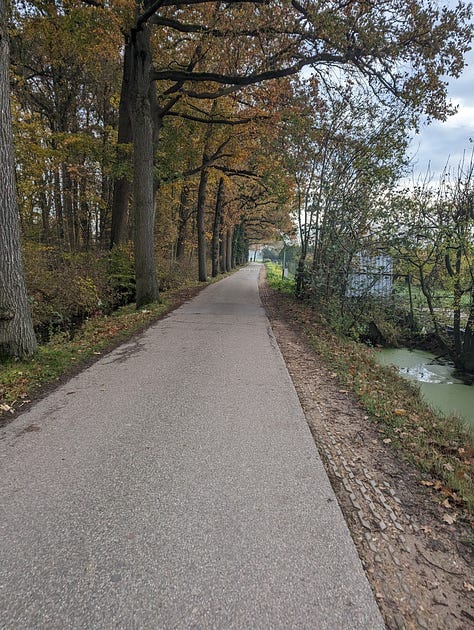
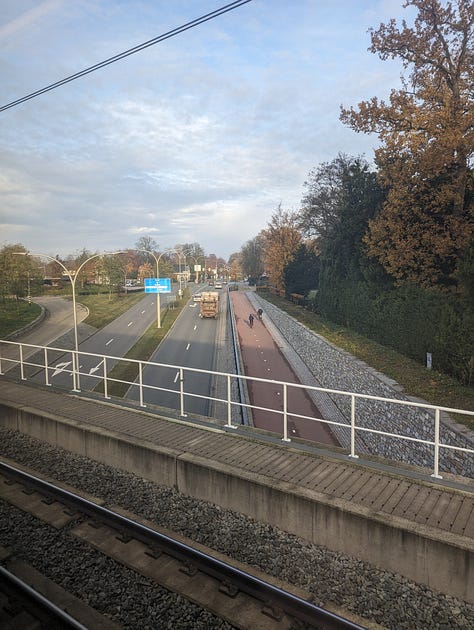
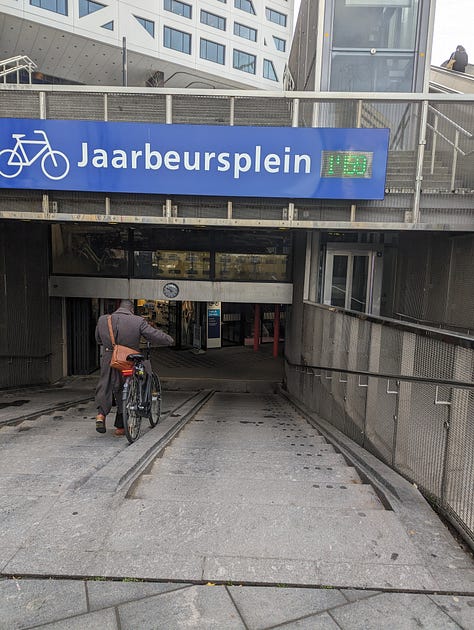
I’ve always heard that you’ve designed a successful bike path when moms feel comfortable biking it with their kids. There’s the “levels of stress” system that tries to quantify it, but seeing all the kids and parents on their way to school was heartwarming. It really makes a difference and you can tell that they are comfortable and secure knowing their children will be safe1.
The craziest feeling was having cars wait patiently for me to bike ahead of them. This is a result of the strict liability that’s enforced on motor vehicles involved in collisions with bicyclists and pedestrians. For the most part, collisions are presumed to be the fault of the driver. Drivers are incentivized to drive slow, careful, and aware of all their surroundings. It meant that cars did not honk at me or try to aggressively pass me on streets. They just waited for me to find a traffic separated path or continued to follow me at a safe distance. This is a different experience than in Madison where I’ve been yelled at on the Southwest Commuter Path for crossing a street on my bike rather than walking it. In the Netherlands, that car would have to slow down because the crossing would be at grade and they wouldn’t dare yell at me. I don’t expect this to change on a dime in Madison, but the driving culture there is so different and it would be a welcome change to move towards it.
Other things that Utrecht does well:
Physical street infrastructure (speed bumps, separated paths, at-grade crossings for bikes, roundabouts, paths seemingly everywhere)
Plenty of locations to lock up bikes and do errands (grocery stores, train stations, restaurants)
Path markings to help with navigation and understanding what you should and shouldn’t do on your bike
I stayed longer in Utrecht than I intended because I enjoyed wandering around on my bike. When I did get to Amsterdam, it wasn’t as convenient, but there were still some notable aspects to the city:
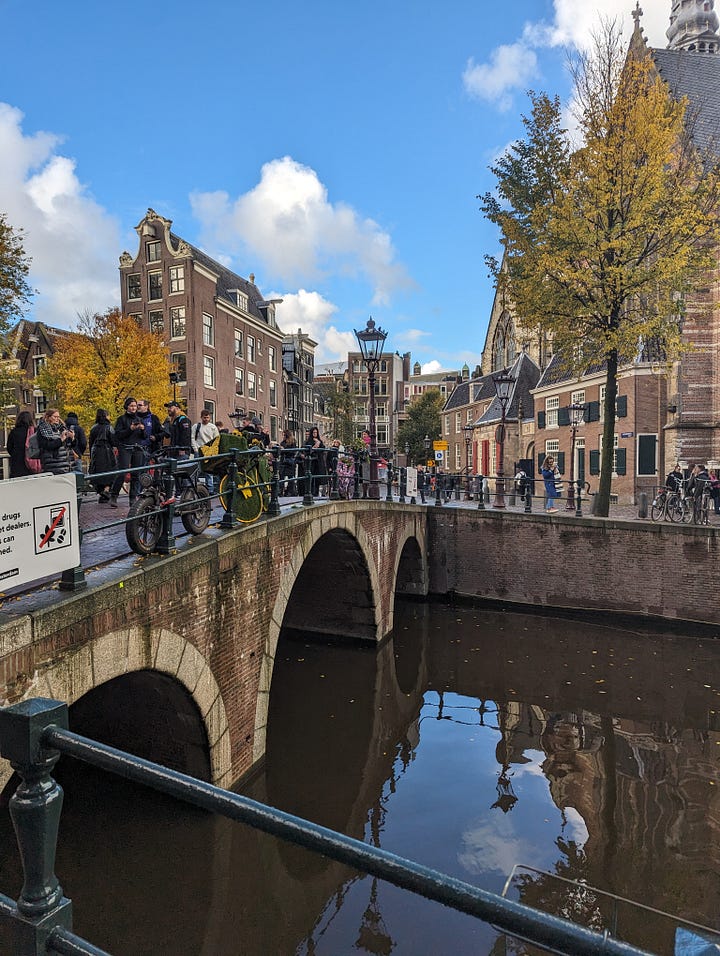
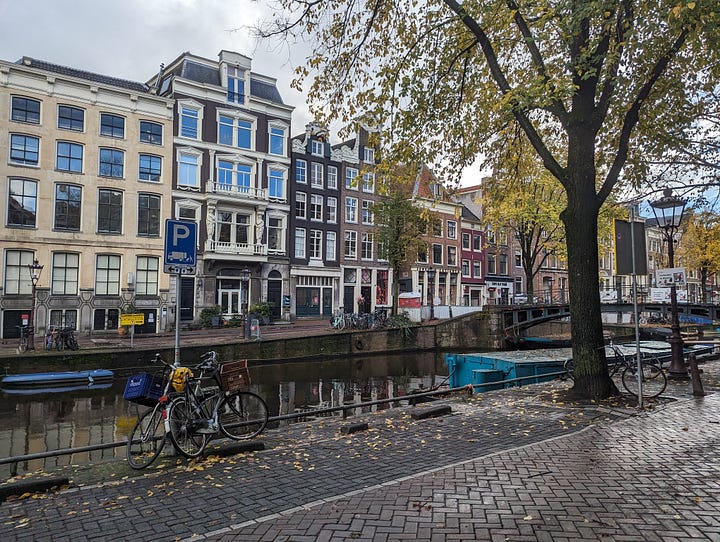
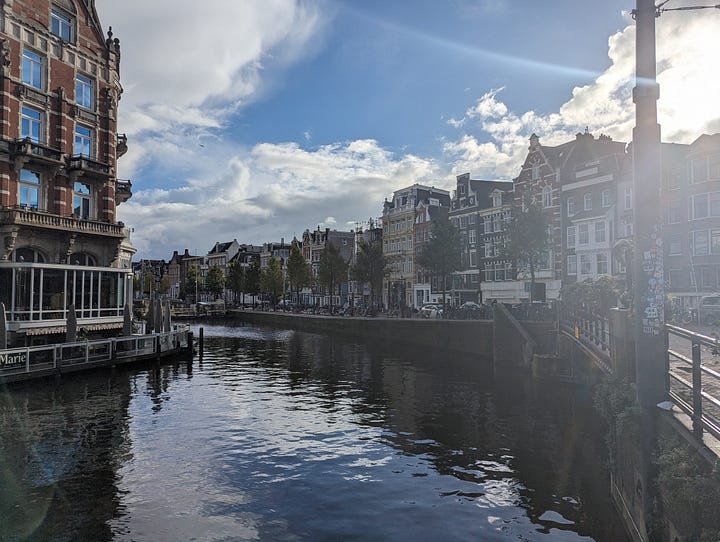
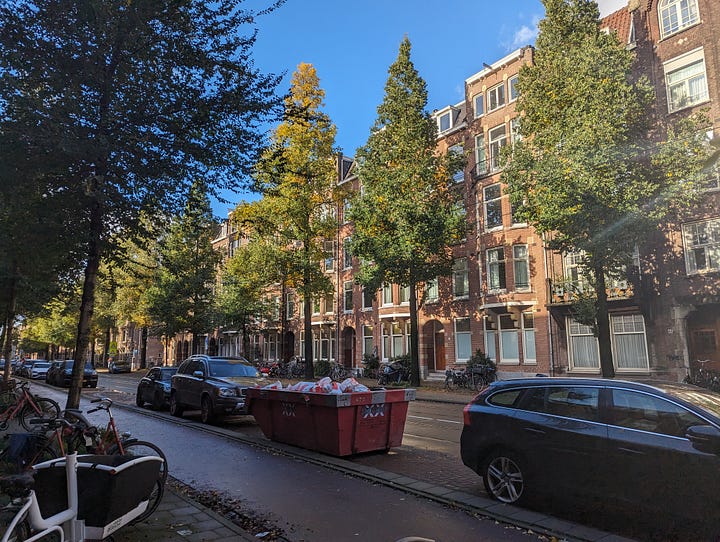
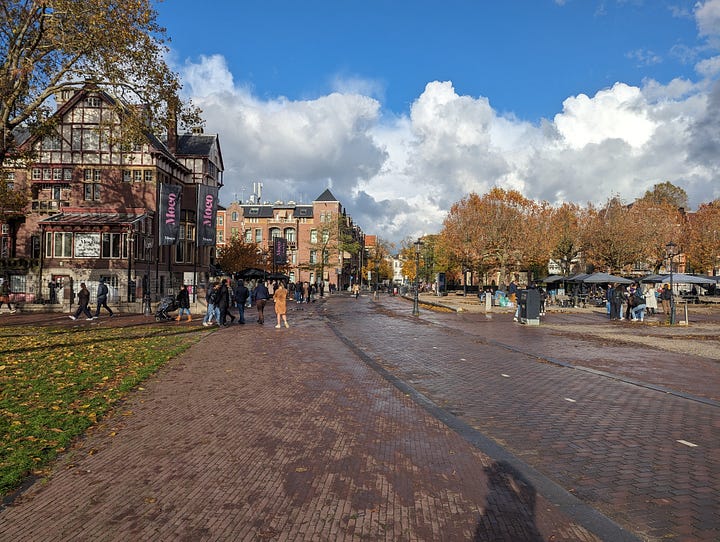
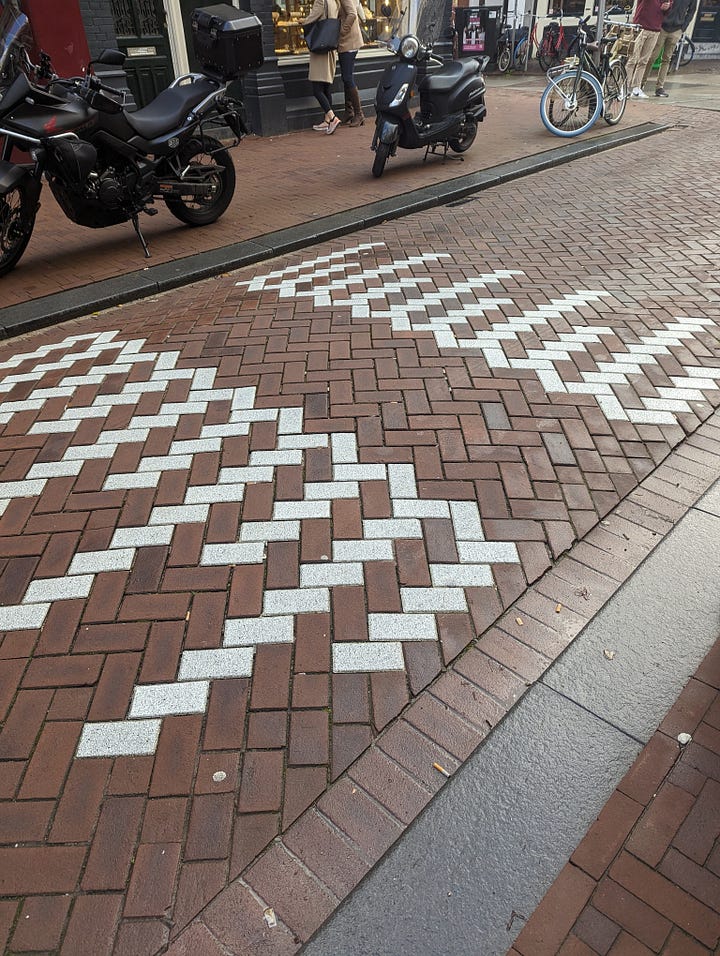
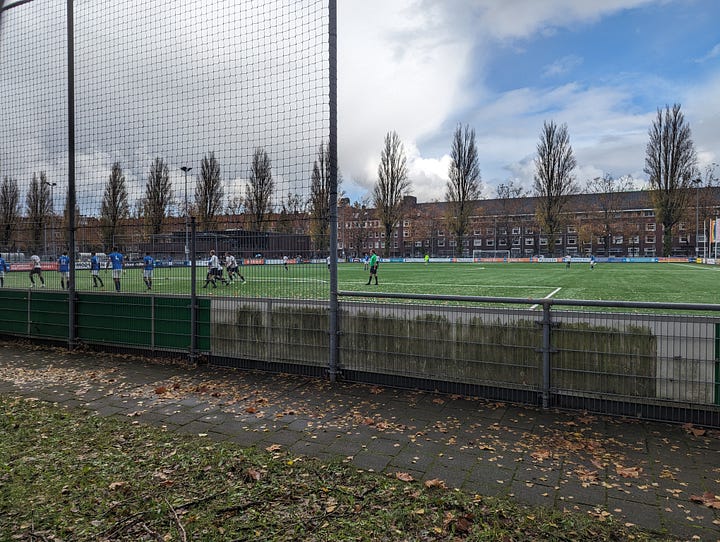
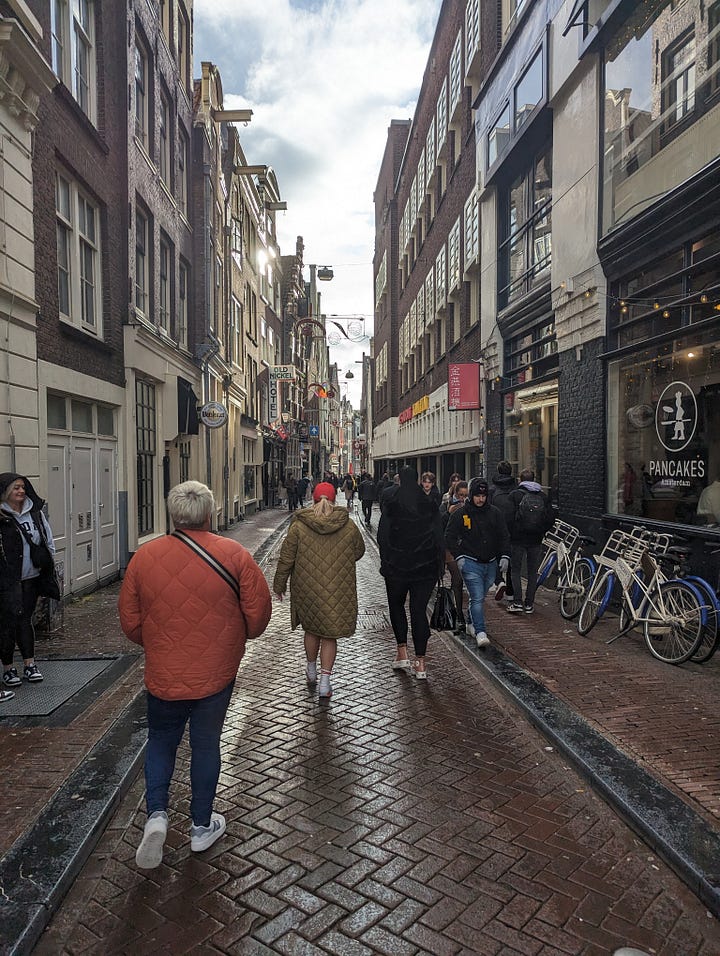
I love the attached housing that they have all across the city. The different colors and forms make for such a beautiful and scenic walks along the rivers. I loved walking on thin streets, in plazas, and to areas where football pitches were within the main city. It felt like I was supposed to be there and cars were foreign. When I walk around Madison, I often wonder where the kids play soccer. My guess is on the outer parts of the City.
We should strive for this
The Netherlands has a focus on people-centered design. It’s incorporated into all aspects of life and the government doesn’t fake its support for it. They clearly put the investment into their cities to make it that way. Madison could do this too; we are trying with Vision Zero, Complete Streets, Transit Oriented Development, and other recent reforms. But many times we overlook or avoid changes out of convenience. Far too often I think about the Complete Green Streets transportation hierarchy and how we still tend to favor the cars on the bottom when we are supposed to favor the people on top.
Even when you show people this chart, traffic engineering will say it’s just not going to work given traffic volumes. We can see this work in cities that are similar to us, it’s time for us to start thinking deeper and more critically about how we might change such that we can be the city other places strive to be, like Nijmegen is for us.
If people notice and say “no bike helmets!”: bike helmets aren’t really a thing, with most people riding at slower speeds and cars mostly not being an issue it’s not as important to wear. I’m still going to wear my helmet in the U.S though!



